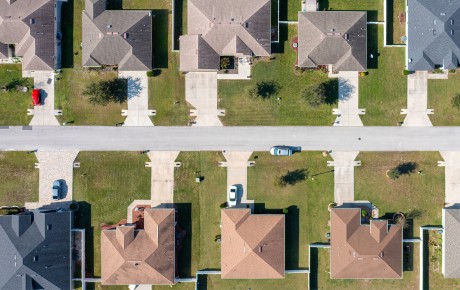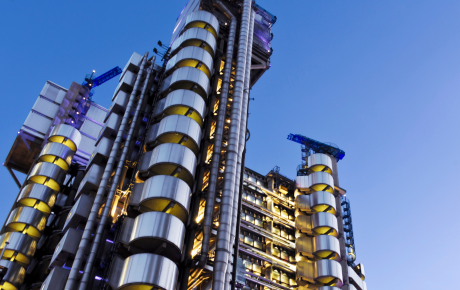
Is the sky the limit for skyscrapers?
With the first 1kilometre-tall tower already under way, the “amplification” of risk is likely to be a growing issue for insurers.
In 2019, the Jeddah Tower in Saudi Arabia will take its place in history as the first building to top out at over 1 kilometre high. With more than 200 floors, 56 elevators and a build cost estimated in excess of $1billion, the skyscraper will tower over Dubai's Burj Khalifa – currently the world’s tallest building – by 173 metres. Will this race to the sky ever reach its limit?
Is there an upper limit?
There is a seemingly insatiable appetite to build ever higher, and, it would seem, no design or technological limitations to doing so. It would be feasible to build a tower that is at least twice as high as the Burj Khalifa, according to its structural engineer. “We could easily do a kilometre,” he said in a 2012 article in The Atlantic. “We could do at least a mile and probably quite a bit more.”
With sky-high ambitions – accompanied by plentiful technological know-how – will insurers be the only people who stand in the builders’ way?
It would seem not. There doesn't appear to be any shortage of insurers willing to back both the construction risks and also the property cover for the completed skyscrapers. "It's a soft market," says Philip Perry, Property and Energy Line Underwriter at Hiscox London Market, "so you’ll always find someone who will insure these risks.”
These iconic, one-of-a-kind towers ...pose a far greater risk to the insurance industry than the structures that we build over and over again
Insurance risk on steroids
An abundance of capacity however doesn't negate the growing complexity of insuring these tall towers. Part of the problem for insurers is the "amplification" of the risk when building a tall tower, says Jon Held, President and CEO of construction consultants JS Held. "We have a saying here in the US that we have an issue and then we have an issue on steroids. A 1km-tall tower has all the issues [of insuring a skyscraper] on steroids. What concerns me about these iconic, one-of-a-kind towers is the risk of whether they’re going to get constructed and perform in the way they are intended. They pose a far greater risk to the insurance industry than the structures that we build over and over again."
Even when a tall tower has been successfully completed, the insurance challenge doesn't end there. Again, it's the amplification of the risks that exist with any building, but which are exacerbated many times over by a tall tower’s height. Held's experience of dealing with the first terrorist bomb on the World Trade Center back in 1993 demonstrated how difficult and expensive it can be to get one of these tall structures back into use given how, in this case, a significant amount of smoke affected both towers, putting 9 million sq ft of office space out of action. “Getting the tenants back in quickly required us to remediate the buildings at a substantial cost – that was the most costly cleaning problem in the history of insurance at $20 million. We also had to make an early decision to close a street in Manhattan and spend another $20 million building a temporary chiller plant to supply the necessary cooling."
Another potential insurance issue for tall towers adds Russell Hicklin, Property Technical Claims Manager at Hiscox London Market, could be a squeeze on the necessary engineering expertise that insurers need in the aftermath of a big loss. "All earthquake property claims, for example, require engineers, but I see a bottleneck of such expertise following a big loss and it will be difficult to get the necessary engineers on site." This could lead to future lawsuits by insureds unhappy with their claims settlement. This issue might also be exacerbated by where the new towers are currently being constructed. All of the 14 tall towers designed to top out at over 500 metres are being built in China, the Middle East, Korea and Malaysia. There doesn’t seem to be the same appetite for these structures in Europe or the US.
Of course, from a simple coverage perspective, everything could also change in the event of a catastrophe. “Where $100 million was once a sizeable limit,” adds Hicklin, “we’re now seeing limits anywhere from $500 million up to $1 billion.” An earthquake that hit a number of these super towers, for example, could have an effect on insurers' appetite for covering these structures. “Capacity is plentiful right now for these risks”, says Perry “but we've seen how quickly capacity can dry up after a catastrophic loss. Even the deepest markets have limited capacity then, as the aftermath of 9/11 showed.”
All of the 14 tall towers designed to top out at over 500 metres are being built in China, the Middle East, Korea and Malaysia. There doesn’t seem to be the same appetite for these structures in Europe or the US.
The financial feasibility
Catastrophes aside, perhaps the ultimate barrier to building ever taller towers will be cold hard economics. “Who is going to rent it?” asks Held. “Large sections of One World Trade Center are empty. Whether that is because people don't want to move into buildings that might be considered [terrorist] targets, or that the cost of these buildings makes the rental value prohibitive, I’m not sure. But I wonder about the financial feasibility of these tall towers."



